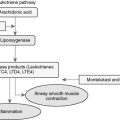CHAPTER 15 Human Immunodeficiency Virus/Acquired Immunodeficiency Syndrome (HIV/AIDS)
I. Introduction and Definitions
A. The human immunodeficiency viruses (HIV-1 or HIV-2) are the viruses that cause HIV infection and the acquired immune deficiency syndrome (AIDS). HIV primarily attacks the immune system, making the patient extremely vulnerable to opportunistic infections (infections caused by pathogens that generally do not affect those with healthy immune systems). HIV primarily infects and destroys immune T-cells that have the CD4 receptor protein on their cell surfaces (also called CD4-positive or CD4+ T-cells). Healthy individuals have a CD4+ cell count between 600 and 1200 cells per microliter of blood. HIV patients have less than 600 CD4+ cells per microliter of blood; the lower the CD4+ count, the weaker the immune system.
B. When a patient is determined to be HIV-positive, CD4+ cell counts and the measurement of the HIV-RNA level (a determinant of viral load) are assessed to determine when treatment should be initiated and with what medications. These tests are also monitored on a regular basis after treatment is initiated to determine clinical response. A lack of clinical response to treatment may indicate viral resistance or patient noncompliance, and a regimen change may be needed.
C. HIV infection progresses to AIDS if the CD4+ cell counts drop to less than 200 cells per microliter. This may happen if the infected individual receives inadequate treatment or develops a major infection. Individuals with a CD4+ cell count less than 200 have the greatest risk of developing opportunistic infections, such as Pneumocystis pneumonia (PCP), Mycobacterium avium complex (MAC) infections, or Kaposi sarcoma.
D. According to the United States Centers for Disease Control and Prevention (CDC), approximately 56,300 patients were newly infected with HIV in 2006, which is a 40% increase from the 40,000 annual estimate used for past years. The increased number may be due to more accurate lab testing and new statistical methods, not a worsening of the epidemic. The number of AIDS-related deaths continues to decline, with an 8% decrease from 2000 through 2004. Advanced treatments can attribute to increased survival, thus resulting in an increased number of people in the United States who are living with HIV infection and AIDS.
II. Signs and Symptoms
A. Many patients are asymptomatic when they first become infected with HIV. One to 2 months after infection, some HIV patients develop flu-like or mononucleosis-like symptoms that last about 1 to 3 weeks. For the next several months or years, patients usually do not experience any symptoms of the disease. Once this asymptomatic period ends, symptoms may include enlarged lymph nodes (persistent lymphadenopathy), fatigue, weight loss, frequent fevers and sweats, persistent or frequent yeast infections of the mouth or vagina, persistent skin rashes, flaky skin, pelvic inflammatory disease (PID) in women, and short-term memory loss. As the immune system continues to weaken, patients may eventually progress to AIDS. During this stage, patients have the greatest risk of developing life-threatening opportunistic infections. HIV-related cachexia, HIV-associated dementia, and certain cancers may also occur in late-stage disease.
III. Treatment
1 PO bid
Truvada
1 PO qd
A. Antiretroviral agents should be used in combination with at least three agents, a strategy known as highly active antiretroviral therapy (HAART). In the United States, updated treatment guidelines, drug information, and other resources formulated for consumers and healthcare professionals can be found at the following website: (www.aidsinfo.nih.gov)
B. Initial combination regimen (antiretroviral naïve patients): use either a nonnucleoside reverse transcriptase inhibitor (NNRTI) or a protease inhibitor (PI) or integrase strand transfer inhibitor (INSTI) in combination with at least two nucleoside/nucleotide reverse transcriptase inhibitors (NRTI):
1 PO qd
Trizivir
(iii) Adverse effects (primary drug examples noted in parenthesis where relevant):
(b) NNRTI
(i) Mechanism of action: bind to site on viral reverse transcriptase, different from NRTI; results in blockade of RNA and DNA dependent DNA polymerase activity
(c) Protease inhibitors (PI)
(i) Mechanism of action: protease enzyme cleaves precursor molecules to produce mature, infectious virions
(d) Nucleotide inhibitors
(f) Entry inhibitor: Maraviroc (Selzentry)
(g) Integrase inhibitor: Raltegravir (Isentress)
2. Treatment of specialized circumstances resulting in HIV exposure
PATIENT PROFILE
Chief Complaint/History: None. Patient goes to clinic pharmacy today for new highly active antiretroviral therapy prescriptions; recently HIV regimen changed due to HIV viral load studies and decreasing CD4 counts. Reyataz and Truvada are new prescriptions.
PATIENT PROFILE QUESTIONS
2. Based on current CD4 counts, the practitioner decides that a PCP prophylaxis regimen should be initiated. Which of the following is considered the first-line regimen for prophylaxis of PCP?
3. Appropriate counseling regarding how KT should take the Reyataz in the antiviral regimen include which of the following?
REVIEW QUESTIONS
(Answers and Rationales on page 363.)
1. A 21-year-old, HIV-positive man presents to the HIV clinic for examination. A PPD is placed, and when he returns to clinic 3 days later, is found to be positive. His LFTs are normal, and he is begun on anti-TB therapy. In addition to clinical evaluation for adverse events, what is the most appropriate monitoring regimen?
3. A 35-year-old HIV-positive woman goes to the urgent care clinic with complaints of genital herpes. She reports parasthesias for 4 days and developed vesicular lesions on her labia this morning. The patient explains that this is her third outbreak in 6 months. What is the most appropriate therapy?
4. A 30-year-old woman presents to the HIV clinic after diagnosis at another hospital. Laboratory evaluation reveals the following:
5. What statements are TRUE about protease inhibitors?




